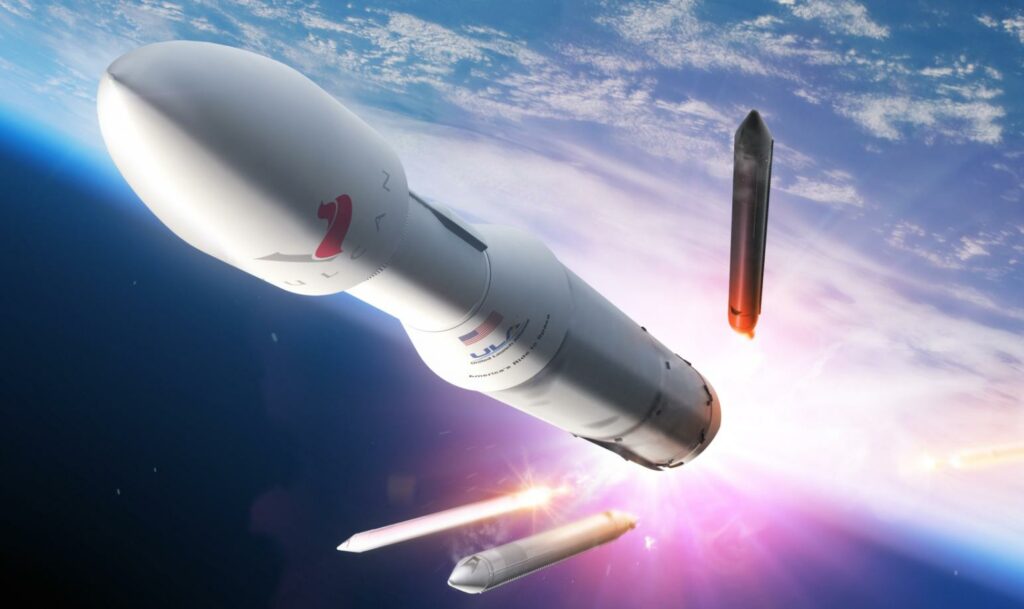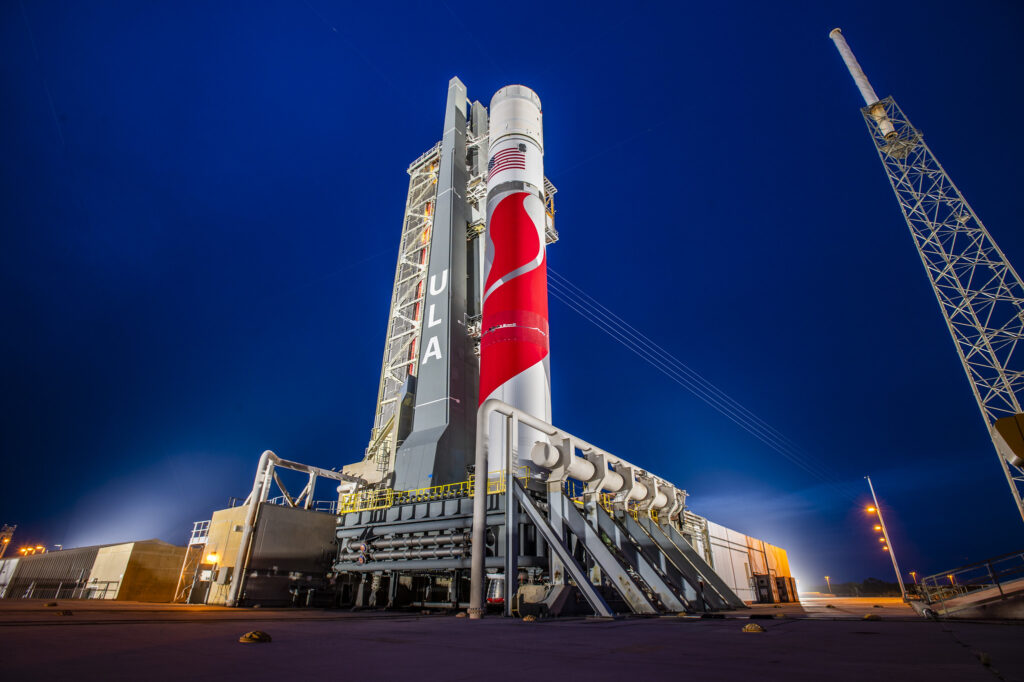The launch operator ULA (a joint venture between Boeing and Lockheed Martin) is preparing to test firing of the Vulcan rocket. It will take place within the next few days. This was announced by the head of the company Tory Bruno.
Main characteristics of the Vulcan rocket
The Vulcan rocket is designed to replace the Atlas V carrier, the first stage of which uses Russian RD-180 engines. It has a two-stage design with the possibility of adding side solid-fuel boosters. Its height is 60 meters, its diameter is 5.4 meters. In its most powerful configuration, the rocket will be able to launch up to 27 tons into low Earth orbit.

The Vulcan first stage is equipped with two BE-4 engines constructed by Blue Origin. They use methane as fuel and liquid oxygen as an oxidizer. The second stage is equipped with a pair of oxygen-hydrogen engines RL-10.
At the time of the project announcement, Vulcan’s debut launch was scheduled for 2020. But due to various technical problems and delays, many of which turned out to be related to the BE-4 engine, this date was shifted several times. As a result, the assembly of the first copy of the rocket was completed in February 2023. It was planned that the debut launch of Vulcan would take place in early May. However, during the tests of the upper stage of the carrier conducted in March, a hydrogen leak occurred, which led to an explosion that damaged the test unit. As a result, the commissioning of the rocket was postponed again.
Firing test of the Vulcan rocket
At the moment, the first instance of Vulcan is located at the LC-41 site at Cape Canaveral. According to Tory Bruno, during the tests, engineers identified a number of changes that need to be made both to the configuration of the launch pad and the carrier. In the coming days, the rocket will be returned to the Vehicle Assembly Building for the necessary operations. After that, it will be installed again on the launch pad, after which the engineers will fire it.

The successful completion of the firing test will be important on the way to the Vulcan’s debut flight. After that, the company will have to complete the investigation of the March accident. In the event that serious changes do not have to be made to the design of the rocket, the Vulcan launch will take place in July. As part of its debut mission, the rocket will launch into orbit a pair of prototypes of Amazon’s Project Kuiper system satellites, and also send the Peregrine spacecraft built by Astrobotic to the Moon. It will make a landing in the area of the Gruithuisen Domes.
Follow us on Twitter to get the most interesting space news in time
https://twitter.com/ust_magazine

